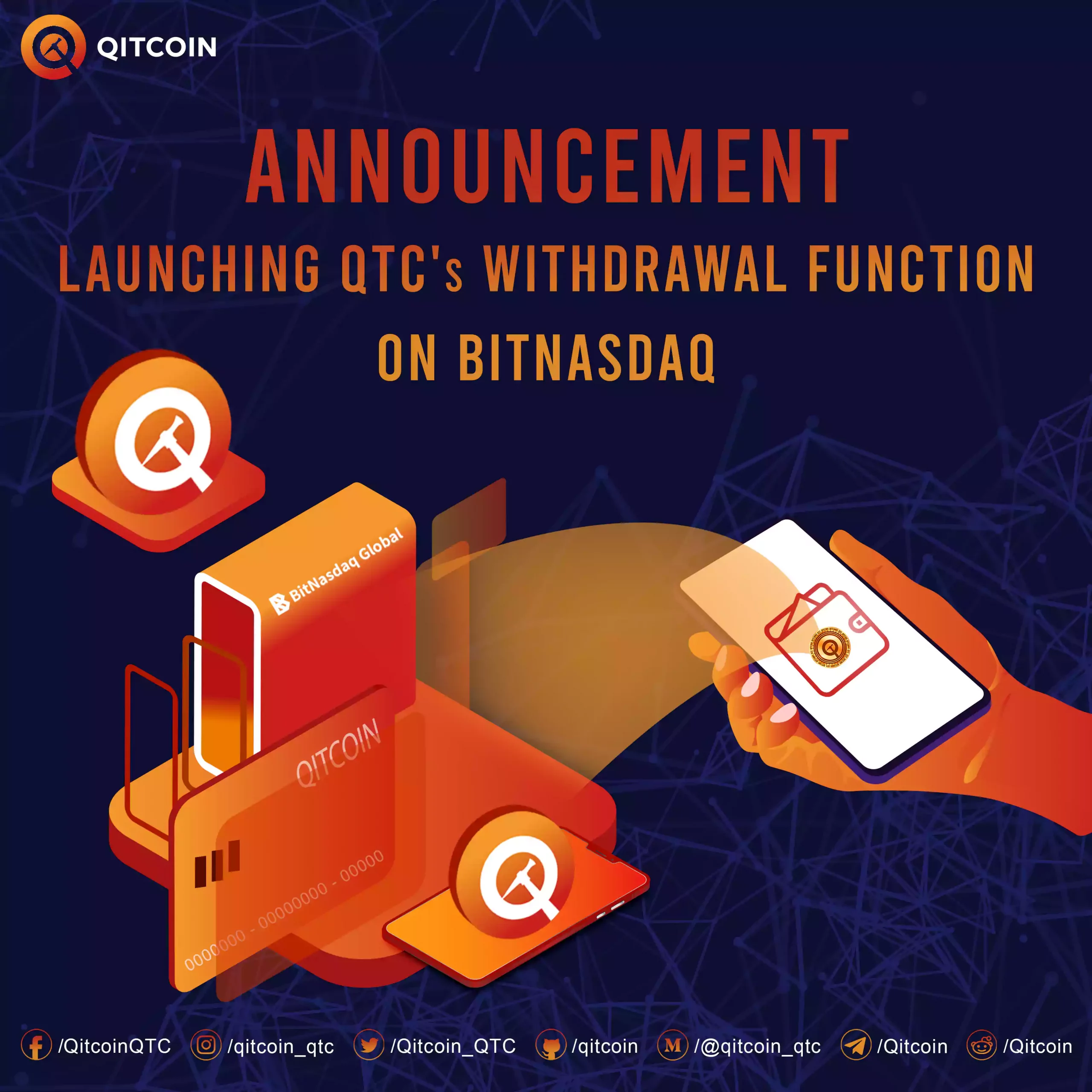
QTC Launch Withdrawal Function On BitNasdaq
On October 1, 2021, BitNasdaq will launch the QTC withdrawal service. Before opening, the recharge service must wait for the QTC source code Anshen to pass.
Qitcoin QTC Algorithm Working
Qitchain QTC abbreviated as QTC. It has a pluggable consensus module that allows users to choose from various consensus protocols. So, this improves the performance of various application scenarios.
Qitchain supports the Kafka and PBFT formula mechanisms. The Kafka consensus mechanism sorts user-initiated transactions through Kafka, and nodes receive transactions from it in a consistent sequence. As a result, this provides transaction order consistency across
various nodes.
The PBFT consensus mechanism packages transactions into blocks. It then, initiates the consensus process after the master node receives a specified amount of transactions. After a consensus is obtained, the same block will be sent to all correct nodes.
How the POC and CPOC work in QITCOIN QTC
QTC ensures the healthy development of the entire coin by establishing a long-term incentive economic model. The model is based on the Proof of Capacity (POC) consensus algorithm.
Simultaneously, it improves upon PoC, resulting in a
Conditioned Proof of Capacity (CPoC) consensus algorithm. Equity incentives have increased while running congruently with Proof of Stake (PoS) and result in advanced community consensus (CPOC+POS).
A CPOC consensus algorithm is a base on which Qitchain has built. It promises to develop the long-term economic model; the economic model of this software supplies a total of 105 million tokens. After every 180 seconds, it produces a block where one block is 2 MB in size. It makes 75 QTC per block.
The initial transaction per second is 70, boasting a total of 3000P network capacity. POS and storage miners jointly produce block rewards. 80% of rewards obtain at 180 antennas, and 20% release at one time. The first halving cycle is the height of 420,000 blocks; in the coming future, it will 700,000 blocks halved every time.
10QTC/T requires for a pledge duration of 360 days, and 5QTC/T for a pledge time of 540 days. The block halves phase links with the pledge demand halving period. Miners, mining pools, foundations, and other parties will benefit from the issuance technique of CPoC mining while ensuring the development of the entire ecosystem invisibly.
Distribution Search Engine Qitcoin QTC
Qitcoin QTC has adapted an encrypted decentralized search engine with this belief that data belongs to the individual rather than corporate. This is what, it has promised to provide by integrating blockchain technology. The developer community combines Bitcoin underlying technology, Ethereum, innovative contract technology, and IPFS decentralized distributed storage technology to build a decentralized blockchain search engine of QTC.
The technology used in it is a distributed ledger technology, and it allows more anonymity and privacy when it comes to looking online for the items and services a user wants. It benefits both consumers and businesses that give users back control of their personal information.
With this decentralized platform, users can have complete control over how their data utilize and share. User’s data encrypts with a private key and remains secure and anonymous unless they choose otherwise.
Qitcoin Withdrawal Function is Now Live
Good News! The opening of QTC’s withdrawal function has been announced. It will be live on 1st October 2021 on BitNasdaq, so only a few days to go. Before opening, the recharge service must wait for the QTC source code Anshen to pass.
Thus, Qitcoin QTC is IPFs based distributed search engine that provides multiple benefits to the users; economic-friendly and environment-friendly are the most important perk of this technology on which users cannot compromise.
